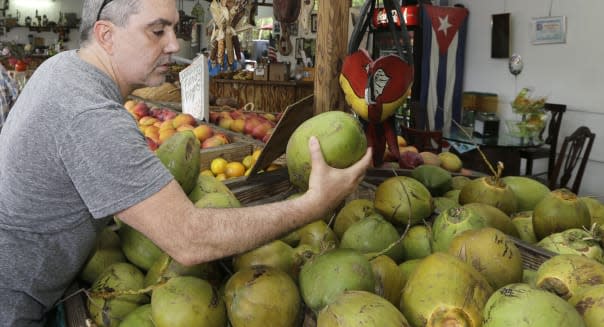Robust Consumer Spending Buoys Economic Growth Outlook

By Lucia Mutikani
WASHINGTON -- Consumer spending recorded its largest increase in nearly six years in May on strong demand for automobiles and other big-ticket items, further evidence that economic growth was accelerating in the second quarter.
While other data on Thursday showed a modest increase in first-time applications for unemployment benefits last week, the underlying trend in jobless claims continued to suggest the labor market was tightening.
%VIRTUAL-pullquote-This portends well for second-quarter growth and the broader momentum of economic activity in the second half of the year...%The strengthening economy suggests the Federal Reserve could raise interest rates this year even as inflation remains well below the U.S. central bank's 2 percent target. Many economists expect a rate hike in September.
"This portends well for second-quarter growth and the broader momentum of economic activity in the second half of the year, and keeps the prospect of a September rate hike squarely on the table," said Anthony Karydakis, chief economic strategist at Miller Tabak in New York.
The Commerce Department said consumer spending rose 0.9 percent last month, the biggest gain since August 2009, after a 0.1 percent rise in April.
May's sturdy increase in consumer spending, which accounts for more than two-thirds of U.S. economic activity, suggested households were finally spending some of the windfall from lower gasoline prices, and capped a month of solid economic reports.
It was the latest indication that growth was gaining momentum after gross domestic product shrank at a 0.2 percent annual rate in the first quarter, as the economy battled bad weather, port disruptions, a strong dollar and spending cuts in the energy sector.
From employment to the housing market, the economic data for May has been bullish. Even manufacturing, which is struggling with the lingering effects of dollar strength and lower energy prices, is starting to stabilize.
Though a report Thursday showed some cooling in services sector activity in June, businesses continued to view economic conditions as improving.
Economists had forecast consumer spending rising 0.7 percent last month.
U.S. stocks traded higher, with healthcare shares enjoying a broad rally after the U.S. Supreme Court issued a ruling upholding tax subsidies crucial to President Barack Obama's signature 2010 healthcare law.
Prices for longer-dated U.S. government debt fell, while the dollar was little changed against a basket of currencies.
Labor Market Tightening
Last month, spending on long-lasting manufactured goods such as automobiles jumped 2.2 percent and outlays on services like utilities rose 0.3 percent.
When adjusted for inflation, consumer spending increased 0.6 percent, the largest jump since last August, after being unchanged in April.
%VIRTUAL-WSSCourseInline-876%The rise in real consumer spending prompted economists at Barclays to bump up their second-quarter GDP estimate by 0.1 percentage point to a 3.1 percent annual rate.
Personal income increased 0.5 percent in May after a similar gain in the prior month. Income is being boosted by a tightening labor market, which is starting to push up wage growth.
A separate report from the Labor Department showed initial claims for state unemployment benefits rose 3,000 to a seasonally adjusted 271,000 for the week ended June 20.
But it was the 16th straight week that claims had held below 300,000, a threshold usually associated with a firming labor market. The four-week moving average of claims, considered a better measure of labor market trends as it irons out week-to-week volatility, fell last week.
The strengthening jobs market could be bolstering confidence in the economy, encouraging households to tap into savings that have been boosted by lower gasoline prices.
The saving rate fell to 5.1 percent last month from 5.4 percent in April. Still, savings remain at lofty levels. That, together with rising wages, suggests more fuel for consumer spending for the rest of the year.
"The labor market is tight, wages and incomes are rising solidly, so we should expect consumers to help lead the economy forward," said Joel Naroff, chief economist at Naroff Economic Advisors in Holland, Pennsylvania.
Despite the acceleration in consumer spending, inflation pressures remained tame last month. A price index for consumer spending increased 0.3 percent after being flat in April.
In the 12 months through May, the personal consumption expenditures price index rose only 0.2 percent.
Excluding food and energy, prices edged up 0.1 percent after a similar gain in April. The so-called core PCE price index rose 1.2 percent in the 12 months through May, the smallest gain since February 2014.
